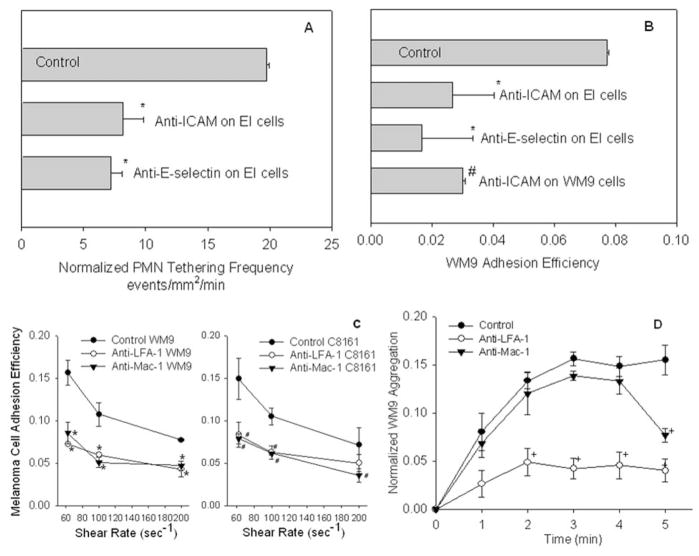Figure 3.
Tethered PMN facilitates melanoma cell migration in close proximity to the endothelium under shear conditions. (A) PMN tethering frequency shows that the number of PMN that adhered to the endothelium per unit time and area is significantly reduced under the shear by blocking ICAM-1 or E-selectin on the monolayer (*P < 0.05 with respect to Control: PMN tethering on untreated monolayer). Shear stress was 2 dyn/cm2. (B) Melanoma cell adhesion efficiency shows that the number of WM9 cells arrested on the monolayer as a result of WM9-PMN collisions is significantly decreased by blocking either PMN-EC adhesion or WM9-PMN aggregation (*P < 0.05 compared with control samples; #P < 0.05 compared with the control). Shear stress was 2 dyn/cm2. (C) WM9 and C8161 adhesion efficiency at different shear rates (media viscosity 1.0 cP) over a period of 5 min. Antibody blocked cases (anti-LFA-1 and anti-Mac-1) are statistically significant (P < 0.05) compared with control at the same shear rate and cell type. (D) Relative contributions of LFA-1 and Mac-1 to binding of PMN-WM9 heterotypic aggregates on the monolayer. Blocking LFA-1 affects aggregation over the entire time course, whereas the effects of Mac-1 blocking are apparent only after 3 min. Data were normalized against the total number of tethered PMN on the monolayer at each time point. Error bars are mean ± S.E.M. for N ≥ 3.

